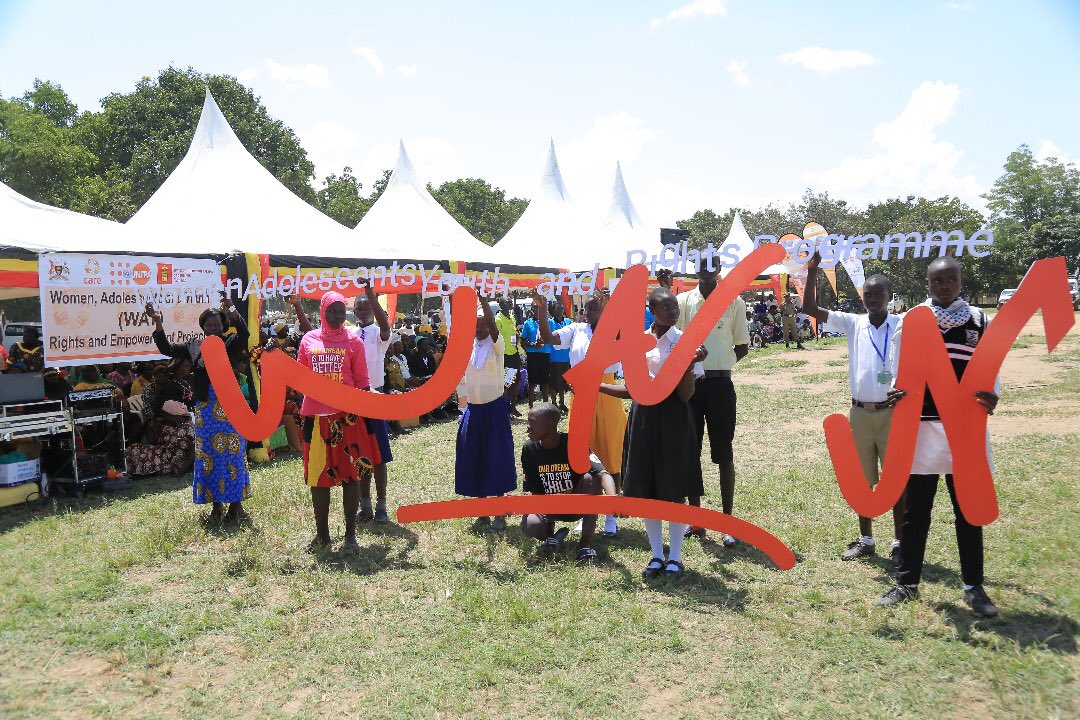
Adokonyero Esther and Akena Christine* are two 17 year olds living in Pajimo, Kitgum District. Both girls are now teenage mothers, who have dropped out of school. Esther hoped to become a nurse, while Christine’s desire was to be a teacher. Shots at both dreams suffered a major setback after the two girls left school to tend to their children.
These are just two of the stories of many of Uganda’s rural girls who have been victims of teenage pregnancy and early marriages. According to the 2016 Uganda Demographic Health Survey, 25% of adolescent girls of 15 to 19 years in Uganda have begun childbearing. This implies that nearly three in every 10 adolescent girls of 15 to 19 years in the country have begun childbearing.
A lot counts to this. For Example in Matidi Sub County, Kitgum District, the locals ascertained to us that one of the causes of teenage pregnancy is the urge by young men to try out their manhood. They lure equally young girls into sex, and the result is young families of children bearing children yet they do not have access to modern family planning information and services.
On another hand is the challenge of parents taking wealth for their daughters, marrying them off when they are still in their adolescent years. The spiral effect comes in; dropping out of school, STDs and STIs, HIV among other reproductive health challenges.
The Guest of Honor Hon. Grace Freedom Kwiyucwiny, the Minister of State for Northern Uganda representing Rt. Hon. Dr. @RuhakanaR has arrived at the venue for the WAY programme launch. #LiveYourDreamUG pic.twitter.com/KyMXhdUfvq
— Reach A Hand, Uganda (@reachahand) June 26, 2018
Stories like these, are what the Women, Adolescents and Youth (WAY) Programme is seeking to address. This is a five year programme by the Government of Uganda under UNFPA’s 8th country programme supported by the Ministry of Foreign Affairs of Denmark/ Danida, targeting both refugees and Ugandans in select refugee hosting districts in Northern Uganda.
The programme comes to address the empowerment gap and to advocate for contemporary solutions. In Agago District for example, Mr Amet Dalmacio, the LC1 of Otingo and Wiye Villages believes that the inclusion of youth friendly corners in deep villages will help reduce the information gap within the young people in the area.
This is one of the many villages that has never had and currently doesn’t have a Youth Corner, a youth friendly space in a health centre where young people can comfortably access reproductive health information and services, and yet young people fear going to health centres as they are almost forbidden areas especially when the issue is of their sexuality. Similarly, the youth in Panyemyel Village, Agor Subcounty in Lamwo district also demanded for a Youth Corner as one of things that could reduce the increasing numbers of teenage pregnancies that are rampant in their Village – they argue that the need for Youth Friendly services is real.
Ahead of our Pre World Population Day Youth Summit this afternoon, our Youth champions together with @AfriYANUG visited key centers in Kitgum to learn about the different SRHR issues. We visited the Main Market, Health center and district officials. #LiveYourDreamUG #WPDUg2018 pic.twitter.com/wiEc3lB706
— Reach A Hand, Uganda (@reachahand) June 28, 2018
We realised, from the two stories mentioned above and others that the main challenge was lack of empowerment; that is-insufficient information, absence of inspirational figures and role models, no one to talk to in the advent of reproductive health challenges, unfriendly youth friendly services and service providers, to mention but a few.
Thank you @DKAmbUganda & @DKinUganda for supporting @UNFPAUganda with yr generous contribution towards promoting #srhr for #refugees & host communities in 10 districts in Northern #Uganda! @UNFPAUganda @UNFPA_Geneva @UNFPA_Nordic @reachahand @UNFPA_ESARO pic.twitter.com/R5hpywp590
— Alain Sibenaler (@alainsibenaler) June 27, 2018
By sharing these real life stories, we hope that we can all see the importance of advocating for these key issues to keep that spark of hope alive in every young person, regardless of sex, tribe, nationality or religion.
Your Reaction